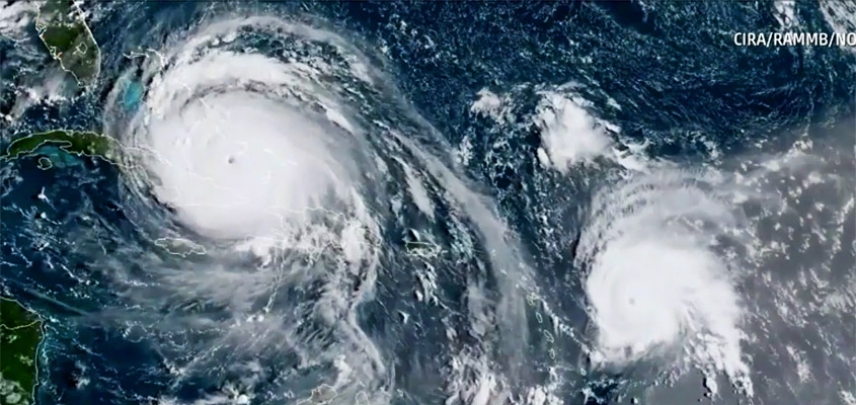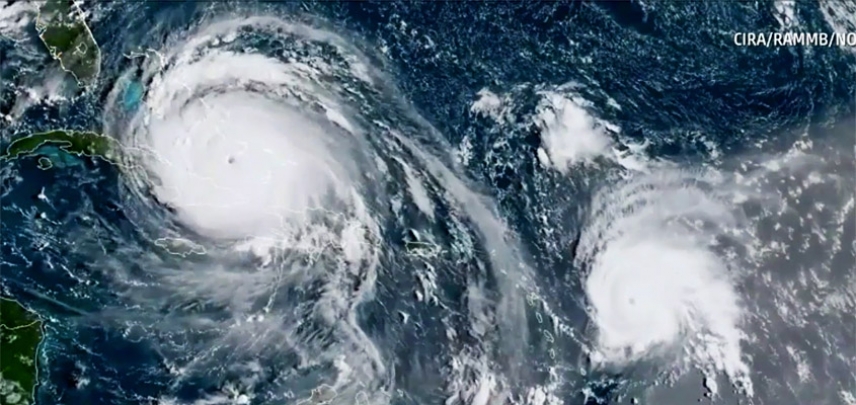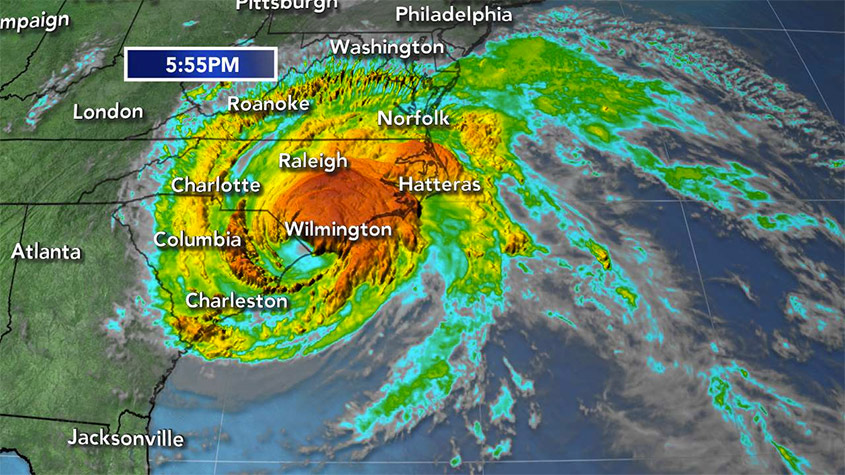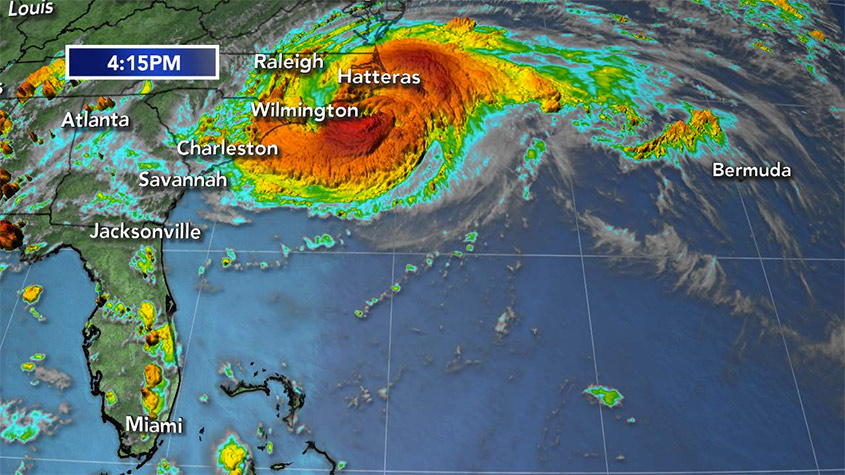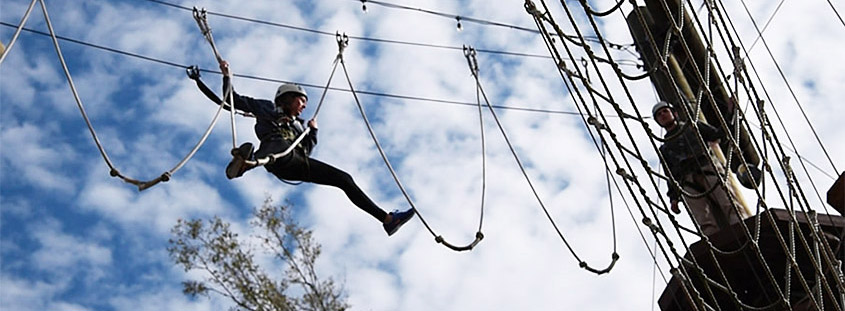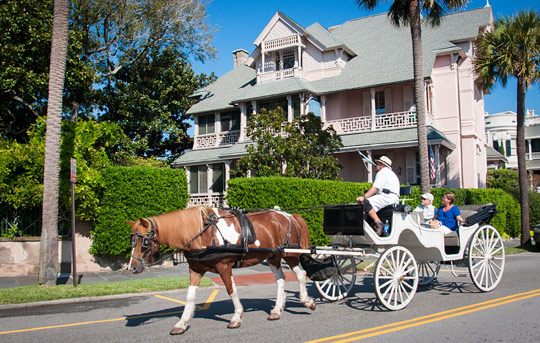When is Hurricane Season?
Hurricane season runs from June 1st through November 30th. However, tropical cyclone activity typically peaks between mid August and mid October each year.
Updates on Any Current Storms of Interest - Hurricane Irma
Sept 12th as of 3:00pm: The Charleston area took a lashing yesterday as Tropical Storm Irma moved through the Lowcountry producing a lot of rain, wind gusts, and tornado warnings. Downtown, Isle of Palms, portions of West Ashley, and James Island took on a lot of water. Folly Beach and the Isle of Palms also dealt with significant beach erosion. The Folly Boat floated away from the place Hurricane Hugo placed it 29 years ago, but it has been recovered, and will hopefully be placed back in its usual spot soon, Flood waters receded a great deal today and SCE&G has been working hard to get power returned to most residents. Contact information for SCE&G, Berkeley Electric Co-op, and Charleston Water can be found below.
![]()
• As of Sept 10th at 8:55pm: Hurricane Irma made landfall in Florida as a Category 4 storm this morning. The current tracking map is above. The center of the storm is now moving north east between Naples and Tampa. The eye wall is deteriorating and Irma is currently a Category 2 storm. 3.7 million people are without power currently in Florida. Charleston County remains under a Tropical Storm Warning and Storm Surge warning until 2:00am Tuesday morning. Isolated tornadoes are possible. People should remain off the roads and should not move through or play in flood waters.
![]()
• As of Sept. 9th at 11:55 pm: Hurricane Irma, now a Category 3 storm has made a slow northerly turn from Cuba. Forecasters warned the storm may pick up strength in the warm waters of the Gulf of Mexico on the way toward Florida and could once again become a Category 4 storm. The eye wall is projected to pass over the Florida Keys tomorrow morning, Sept. 10th around 8am. The governor of Florida made it clear the Keys would be impacted in a major way and nobody should choose to shelter in place there. Other Florida residents who have decided to shelter in place have been advised to stay inside away from windows and doors.
A Storm Surge Warning and Tropical Storm Warning remain in effect for Charleston County, McClellanville, and Edisto Island. Peak Wind Forecast is currently 30-40 mph with gusts up to 55 mph. The window for tropical storm force winds arriving is early Monday morning until Monday afternoon. The threat of tornadoes is still possible. All Charleston tri-county residents are advised to shelter in place in a secure building once tropical storm conditions have arrived. Residents should stay off the roads until the storm and threat of storm surge have passed. Failure to obtain adequate shelter may result in serious injury or death. Do not drive through moving water once the storm has passed. Do not wade or play in standing or moving water during the storm or once the storm has passed Contaminated water can result in infection or disease and injury may occur from floating objects or objects underneath the water.
![]()
• As of Sept. 8th 11:39 pm: Hurricane Irma has again been upgraded to a Category 5 storm. Cuba is now feeling the effect of the storm. See the graphic above for updated tracking. The projected path of the center of the storm has shifted slightly west, which is encouraging news for Charlestonians, though the governor has warned residents to keep a watchful eye on the situation. Evacuations have been ordered for over 5 million Floridians as well as low-lying and coastal portions of Georgia and South Carolina. Lane reversals for I-26 have been cancelled.

• As of Sept. 8th at 7:38am Eastern Time: See the tracking map above for tracking as of Sept 8th. Always refer to your local weather station, the Weather Channel, or the National Hurricane Center for the most up to date information. Currently the storm has been downgraded to a Category 4 Hurricane, but still remains a very dangerous system. Evacuations have been ordered in Florida and parts of Georgia. The Governor of South Carolina has also ordered mandatory coastal evacuations for South Carolina with a lane reversal of I-26 starting at 10 am on Saturday Sept. 9th from Charleston to Columbia. Myrtle Beach, Beaufort, and Hilton Head will also have lane reversals.
• As of 8am Tuesday Sept. 5th: Hurricane Irma has been upgraded to a Category 5 Storm with maximum sustained winds of 175 mph.
• As of 3am Tuesday Sept. 5th: Hurricane Irma is a Category 4 Storm with sustained winds of 145 mph, expected to pass over the Leeward Islands and Puerto Rico Wednesday Sept. 6th. The projected cone has the storm making a potential US landfall in south Florida late Saturday, Sept. 9th. The storm could then continue north west over Florida, turn northward up the coast of Florida toward Georgia and South Carolina, or swing north east and head back toward the Atlantic tracking toward South Carolina and North Carolina. Stay connected to your local news for the most up to date information on this storm.
Emergency Management and Roadways
For South Carolina Emergency Management resources including information on evacuation routes and shelters, click here.
Hurricane Irma School Closures
Schools are closed for Charleston, Berkeley, and Dorchester Counties Friday Sept 8th in preparation of the storm. Schools will remain closed until the following Tuesday, Sept 12th (changes are possible depending on possible threat and any damage).
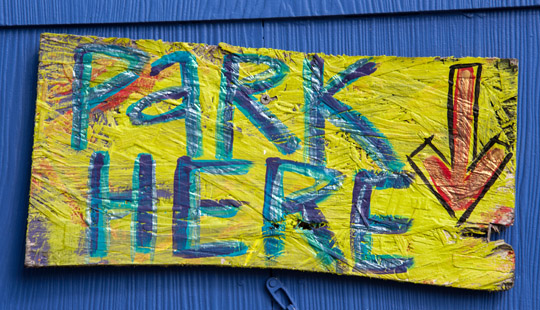
Free Parking in Downtown Charleston During the Storm
All parking garages (with the exception of the Gaillard Center in downtown Charleston will be free of charge for residents wanting to move their cars to higher ground as of Friday Sept. 8th. Residents have been instructed to use caution as the garages will likely not have attendants and the elevators may not be working if power is lost. Residents have been instructed not to park their cars on the first level or top level of the decks.
SCE&G Power
To report sparking or downed power lines, call 1-888-333-4465.
For general information, call 1-800-251-7234.
Berkeley Electric Cooperative
John's Island District Office: 843-559-2458
Goose Creek District Office 843-553-5020
Awendaw District Office 843-884-7525
Moncks Corner District Office 843-761-8200
Charleston Water System
To contact Charleston Water or report water problems call 843-727-6800.
Elevation Finder for Charleston and Beyond
Looking to see what elevation your property sits at? Click here to enter any any address for elevation information.
Have a Question You Don't See the Answer To?
People can call the citizens' information line at 843-973-7219 starting September 8th for questions related to the storm.
How Are Hurricane Category Rankings Established? What Kind of Damage can be Done by Each Storm Strength?
Hurricanes are ranked using the Saffir-Simpson Wind Scale. The scale is separated into categories (Cat 1-5) based on the storm’s sustained wind speed. Category 1 and 2 storms can be dangerous, do require preparation, and can cause damage to property. However Cat 3 storms and higher are classified as major hurricanes because of the potential for more significant loss of life and property damage. Below is a breakdown of each category.
Category 1 (74-95 mph winds) Frame built homes with quality construction can experience damage to vinyl siding and roofing including shingle damage and gutter damage. Potential damage to power lines can result in loss of power for anywhere from several hours to several days. Small to large size branches may snap and shallow trees may be uprooted.
Category 2 (96-110 mph winds) Frame built homes with quality construction may experience broken windows, damage to house siding, and likely loss of power that could last from a few days to weeks depending on power company response time and other damage. Tree branches may snap and trees with shallow roots may come out of the ground causing blocked roads or potential damage to nearby structures.
Category 3 (111-129 mph winds) Frame built homes with quality construction may experience devastating damage. Door of home can blow in, roof shingles and decking may blow off at weak points on home. There is high potential for trees being uprooted or limbs snapping. Flying debris may cause damage to windows. Neighborhoods may experience issues with electric outages and clean water issues for several days to weeks.
Category 4 (130-156 mph winds) Frame built houses with quality construction may experience catastrophic damage. Homes can sustain severe damage to roof (both shingles and structure) and exterior walls. There is high potential for broken windows. Many trees will be uprooted. Uprooted trees, large limbs, and broken power poles may cause damage to nearby structures and / or extensive road block especially in neighborhoods. Areas will likely encounter loss of power and potential issues with clean water for an extended period of time depending on power company response time and scope of outages.
Category 5 (157 mph winds or higher) Many frame built homes with quality construction will be destroyed or receive extensive structural damage. Total roof failure or wall collapse are not uncommon. Extensive tree loss and damage to power poles can isolate neighborhoods. Power outages or issues with clean water may last from weeks to months. A large portion of the area will likely be uninhabitable for weeks to months.
**The estimated damage above does not take into account rainfall, flooding, or storm surge which can cause structural damage to homes, vehicles, and other personal property and present potential for injury, spread of disease, and loss of life in extreme cases.
Should I Evacuate My Home?
Evacuation of your home prior to a Cat 1-3 hurricane, assuming it is quality frame built construction and flooding or storm surge are not a major concern, is often times a personal decision. The homeowner should take a number of variables into consideration including wind speed, rainfall predictions, potential storm surge, and other potentially threatening conditions when deciding whether or not to evacuate or shelter in place. Be sure to consider the health and welfare of the people in your home. Are any of them currently sick, injured, immobile, on special medications, or have special needs such as breathing machines or health equipment that requires electricity? Make decisions accordingly. Ensuing Cat 3 storms should inspire strong consideration for evacuation. In instances where Cat 4-5 storms are threatening, there is little reason to consider staying. At worst you are likely putting yourself or others in extreme danger including possibility of death. At best, you will likely be living in comprised, and, in many cases, downright miserable, conditions during and directly following the storm.
People in low-lying areas or locations prone to flooding such as barrier islands, should evacuate when a hurricane approaches. Tropical storms and cyclones can cause heightened or extreme tides that may effect an area before, during, and after a storm’s arrival. People who live on the coast should strongly consider potential danger from storm surge. People living in mobile homes or people who are concerned about the structural integrity of their home should plan to evacuate as a hurricane approaches. Even less powerful hurricanes can cause extreme damage or complete destruction of mobile homes.
In any and all cases, you should heed the recommendations and requests of state and local officials. If an evacuation has been ordered for your area, it is because local leadership is concerned for your safety and well-being. There is a chance you may put first responders in compromising or high risk situations if you stay and have to be rescued. If you are ordered to evacuate, it is best to make preparations and do so early.
Hurricane Preparation - For Your Home, Business, or Other Structure
• Bring “loose” objects outside in the house or garage. This includes such items as bikes, trash cans, recycling bins, patio furniture, garden tools or accessories, and loose pool equipment.
• Do NOT bring propane tanks inside your home or garage. Your grill may be stored inside. However, remove propane tanks and securely fasten them outside (they can be latched or tied down to a tree or fence post). They should not be stored inside as they are extremely flammable.
• Trim or remove damaged trees or tree limbs which pose a threat to your roof.
• Cover Windows with Plywood or Storm Shutters. If you are evacuating the building, consider covering doors with plywood also.
• Do not tape windows. It is ineffective in preventing damage during a hurricane.
• Purchase and fill sand bags if rising water is a concern. Place filled sand bags around low lying doors or water entry points.
• Make any necessary repairs to roof. Remove any fallen limbs or debris.
• Clean out gutters.
• Photograph home or business taking a photographic inventory of furniture and other belongings for insurance purposes.
• If you decide to evacuate your home or business, turn off the main water, and unplug major appliances and or electronic devices.
Hurricane Preparedness - If You Decide to Stay and Shelter in Place
Create an Emergency Supply Kit with the following items:
• Clean Water - At least one gallon of water per person per day for a minimum of three days. Don’t forget water for pets. Remember you will need drinking water as well as water for things like brushing teeth, bathing, and flushing toilets if power goes out. Filling the bath tub prior to the storm and using that water as a source for flushing toilets is helpful.
• Non Perishable Food - At least a three day supply for every person and or pet in your home. It’s helpful to purchase food that you or your family would eat anyway. That way if you don’t need it for the storm, the food (and the money spent on it) don’t go to waste.
• Manual can opener for any canned food.
• Cutting tool such as scissors or a pocket knife.
• Flashlights with appropriate batteries.
• Candles or lanterns for long term light sources. Always be cautious with an open flame in your home. Do not leave an open flame unattended.
• Battery powered or crank powered radio and appropriate batteries.
• First aid kit.
• At least a two week supply of any medications that you or a member of your household may need.
• Cell phone with inverter, extra battery charger, or solar charger.
• Any prescription eye glasses needed.
• Duck tape for any last minute tie down needs or repairs.
• Closed toed sturdy shoes. Rain boots are recommended for areas where large rainfall or flooding may cause contaminated water.
• Any supplies that your pet might need including medications.
• Cash.
• Copies of important documents such as insurance policies, wills, or identification. Contact information for family and friends if cell phone dies and you need to borrow a phone.
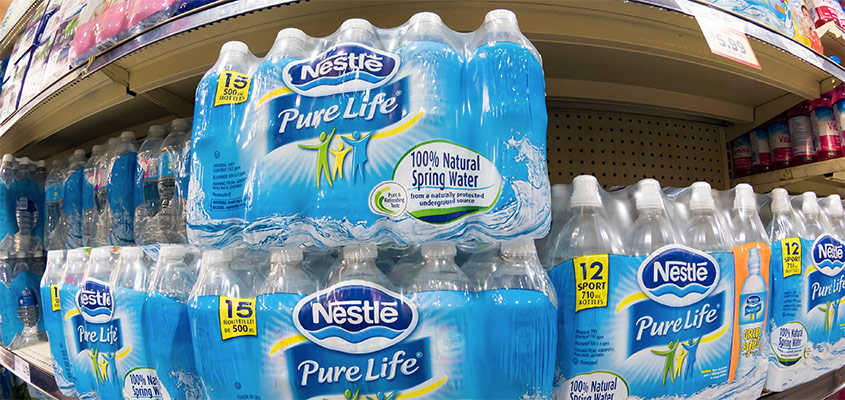
Options for Water if You Decide To Shelter in Place During a Hurricane
An obvious source of water for storm prep is bottled water in a variety of sizes from single serving bottles to 5 gallon bottles, but often stores sell out as a storm approaches. Please don't panic. There are other options for water!
• Most people still have access to water from their faucets prior to a storm's arrival. Fill Nalgene bottles, tuperware containers, coolers, cooking pots, or other common sense options for water.
• If you can't purchase water, you can likely purchase other bottled drinks as those don't typically sell out as quickly. Buy inexpensive soda bottles. Drink or dump the soda prior to thr storm, and fill with water.
• Fill coolers or ziplock bags with ice from your ice maker and store in freezer (set at coolest setting). As you empty your ice maker, the machine will continue to make more as the storm approaches. This is a good way to stock up on ice.
• Fill tuperware containers or ziplock bags with water prior to your storm for another ice option. Be sure to leave a little air space as the water will expand as it freezes.
• Fill your bathtubs prior to the storm. The water in bathtubs is an excellent source of water for flushing toilets if power has been lost.
• Worried about hygiene? You can pick up baby wipes and just towel off.
Hurricane Preparation - If You Decide To Evacuate
*If you are towing a boat or trailer of any kind try to evacuate a head of the crowd as you will need to drive slower on roads and may require extra gas compared to other folks driving (and gas wait times may be extended). High profile vehicles may also be more compromised by high winds or bridges.
* Call a friend or family member to let them know where you will be evacuating, what time you are leaving, the route you plan to take, and what time you expect to arrive. Bring the following with you if you need to evacuate:
• Cash.
• Copy of evacuation route or directions where you are going (GPS can drain cell phone more quickly and you may be served better by a paper map or route instructions).
• Contact information of the people you are staying with, hotel, or shelter.
• Copies of important documents such as insurance policies, wills, or identification.
• Drinks and snacks in case you get stuck on the road for an extended period of time.
• Flashlight with appropriate batteries.
• First Aid Kit.
• All medications, feminine hygiene products, contacts, or eye glasses needed for you or any member of your traveling party for the extent of time you will be gone (minimum two week supply)
• Cell phone with inverter, extra battery charger, or solar charger.
• Clean underwear, socks, and clothing for your stay.
• Closed toed sturdy shoes.
• Any and all supplies needed for any accompanying pets including pet, carrier, food, water, and any medications needed).
• An extra gas can.
• Depending on where you are evacuating, you might need to bring extra toiletries, bedding or sleeping bags, towels, or pillows.
• Bring a copy of your home or businesses photo inventory on an SD card, thumb drive, or external hard drive (take pictures of your home or office with belongings inside before you leave just in case for insurance purposes.
• Any irreplaceable compact items you do not wish to leave in your home such as family photos.
If You Have to Evacuate to a Shelter
If you find you need to evacuate, it may be preferable to make arrangements with family members or friends or call ahead for a hotel reservation if you need to leave your home. In many situations, family members or friends are very willing to help evacuees in need of a place to stay for a few days. This also relieves pressure on hotel occupancy and shelters. Be sure to check ahead of time on arrangements for pets.
If you find yourself needing to evacuate to shelter as a storm approaches, do not hesitate in doing so. Below is a list of some standard items you should bring. Please check with your specific shelter for a shelter specific list. If you find yourself in need of transportation in order to evacuate, please contact local officials or law enforcement for instructions.
• Driver’s license or identification card.
• Copy of important paperwork such as insurance policies, deeds, wills. Contact information for friends and family, physicians, or insurance agent.
• Any necessary medications, eye glasses, hearing aids, or other essential health items ( a minimum two week supply is a good start).
• A flashlight with batteries.
• A battery operated portable radio (especially important if you don’t have a radio in your vehicle).
• Food or drinks (the shelter may provide meals but not snacks which may make you more comfortable).
• Clean spare undergarments, clothes, and shoes. Toiletries, including toothbrush and toothpaste, soap and shampoo, and any feminine hygiene products, and a towel for each person.
• Money, travelers checks, or credit cards. It is advisable to bring some cash as credit and debit cards may not be accepted if the area loses power.
• A copy of your home or businesses photo inventory on an SD card, thumb drive, or external hard drive (take pictures of your home or office with belongings inside before you leave just in case for insurance purposes.
• If you are bringing pets, check with shelter on their recommendations. Generally speaking, be sure to bring pet food, carrier, leashes, and any medication you pet may need while you are away.
• Items for sleeping comfort. Quite often, shelters will not have cots and you may be sleeping on a floor. Prepare accordingly by bringing items as if you were going to be camping - sleeping pads, air mattresses, blankets or sleeping bag, and pillow for each person.
• Bathrobe or cover up and shower shoes.
• Books, board games, cards, or other quiet options for entertainment.
What not to bring to a shelter:
Alcoholic beverages, illegal drugs, and weapons are not allowed in public shelters.
Helping Others Before and After a Hurricane
Check with friends and neighbors leading up to and after the storm. Be especially mindful of the elderly or residents with limited mobility, people who are ill, or people who have limited access to transportation. Once you have made your own preparations, offer help in preparing their homes. If you are purchasing food and water at the store, ask if they would like to accompany you or if you can pick up items for them. Check to make sure people have options for transportation or a place to go if they need to evacuate. After a storm passes, be sure and check on any residents who may need help with yard clean up or removing debris.
**Traveling Ink is not a hurricane preparation expert. The information included here is based on research our writer has compiled and should be used only to supplement official information. Please refer to state and local officials and qualified weather experts for up to date hurricane information.
sources: NOAA, National Hurricane Center, Live5 News, WPTV WPB, Weather.gov, Heavy.com

